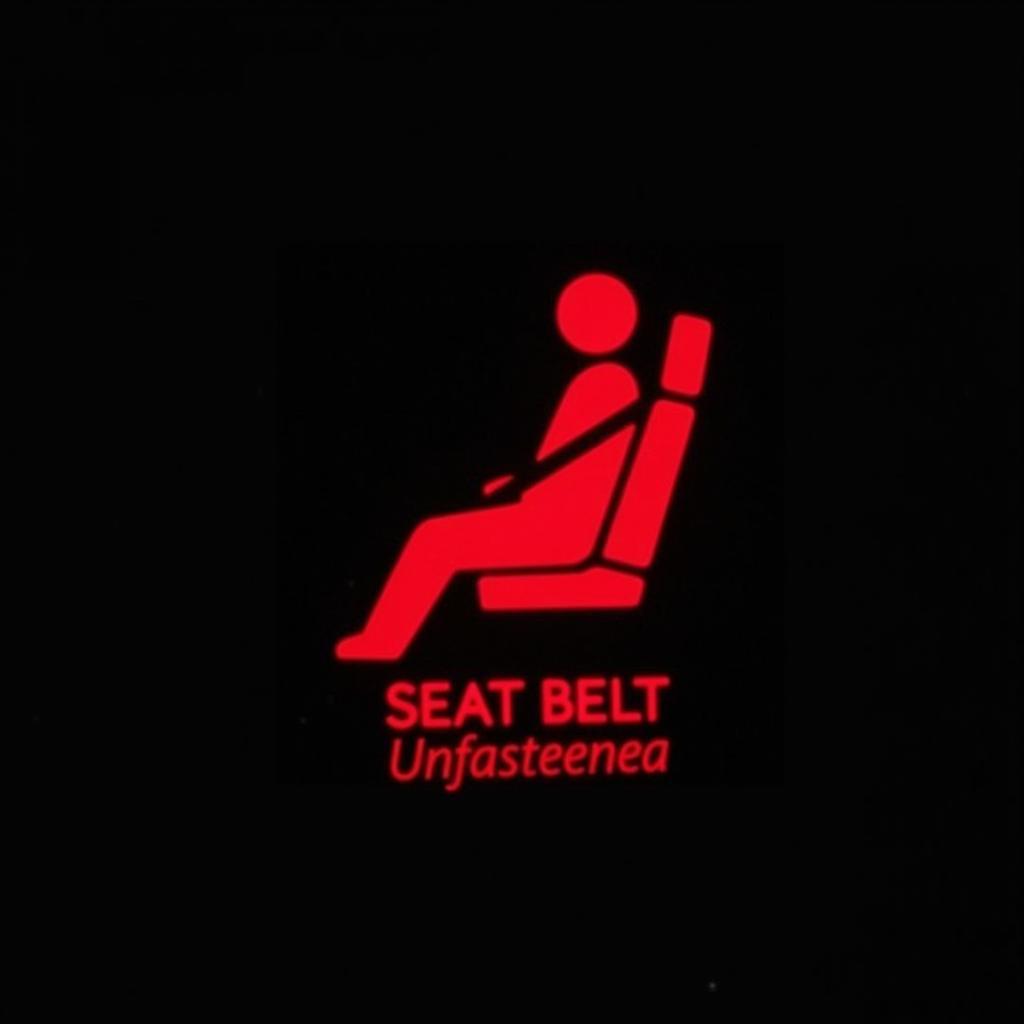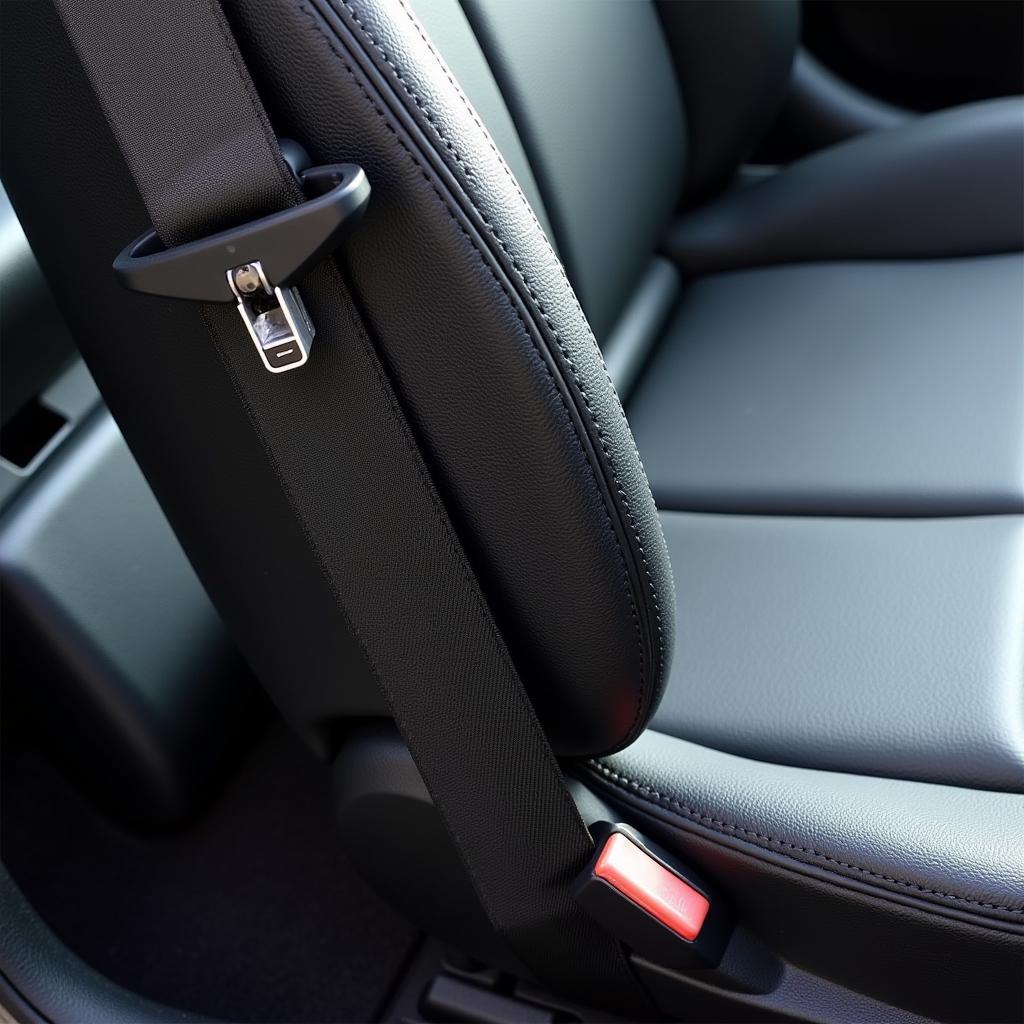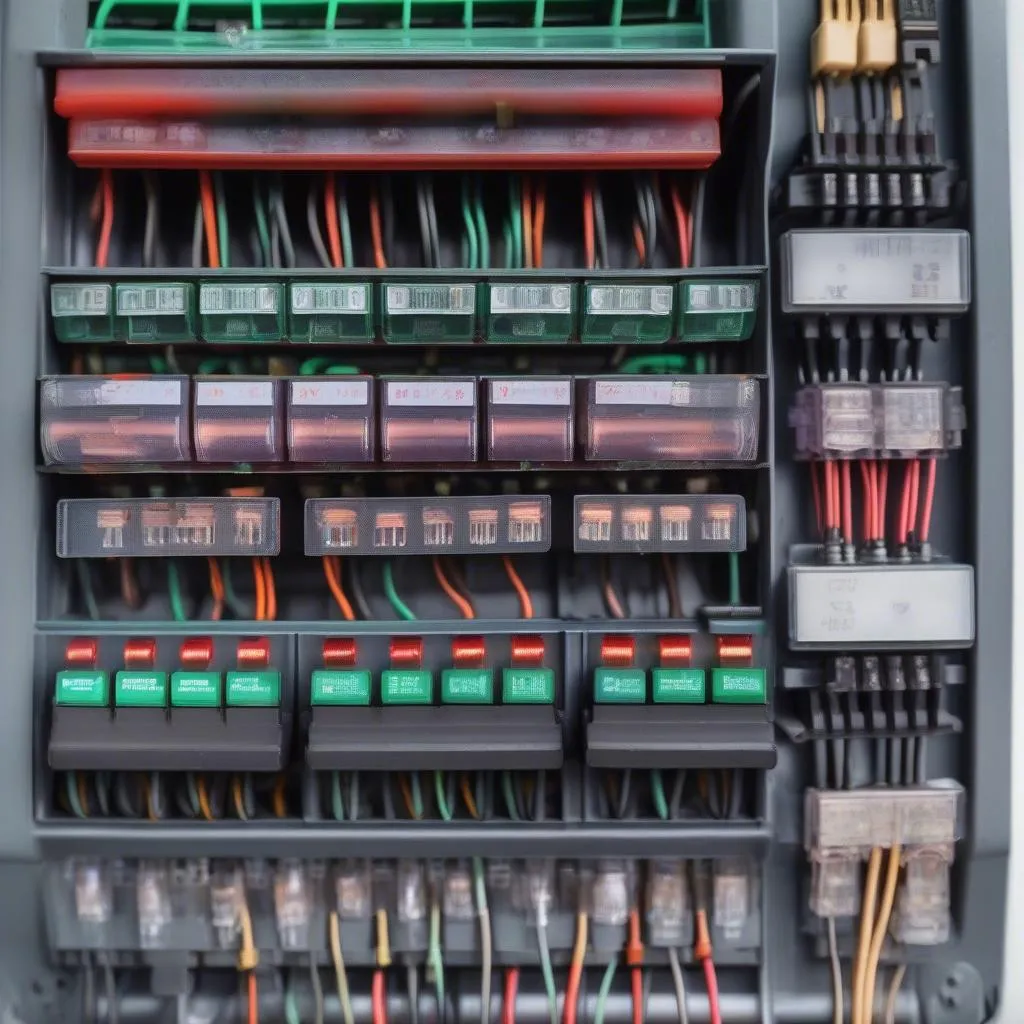If you’re experiencing a persistent seat belt warning light or chime in your BMW 335i, you’re not alone. This is a common issue that can be caused by a variety of factors. While it might seem like a minor annoyance, ignoring it could compromise your safety and potentially lead to more serious problems down the line. This comprehensive guide will delve into the common causes of the BMW 335i seat belt warning, provide practical solutions, and offer expert insights to help you address this issue effectively.
 BMW 335i Seat Belt Warning Light
BMW 335i Seat Belt Warning Light
Understanding Your BMW 335i Seat Belt Warning System
Your BMW 335i is equipped with a sophisticated safety system designed to keep you and your passengers safe. A key component of this system is the Seat Belt Reminder System (SBRS). The SBRS utilizes sensors in the seat and seat belt buckles to detect whether the occupants have fastened their seat belts. When the system detects an unfastened seat belt, it triggers a series of warnings to alert the driver and encourage compliance. These warnings can manifest in various forms:
- Visual Warnings: The most common visual cue is the illumination of the seat belt warning light on the instrument cluster. This light typically depicts a figure with an unfastened seat belt.
- Audible Warnings: In addition to the visual cue, the system might also emit a series of chimes or beeps. The frequency and duration of these chimes often increase the longer the seat belt remains unfastened.
- Message Center Display: Some BMW 335i models may also display a warning message on the iDrive system’s central information display, further reinforcing the importance of fastening the seat belt.
Common Causes of a BMW 335i Seat Belt Warning
While a faulty seat belt buckle or wiring issue could be the culprit, the most common reasons behind a persistent BMW 335i seat belt warning are often less complicated than you might think:
- Unfastened Seat Belt: It might seem obvious, but the simplest explanation is often the most likely. Double-check that both the driver and passenger seat belts are securely fastened. Ensure the seat belt buckle is properly latched and there are no obstructions preventing it from engaging fully.
- Weight on the Passenger Seat: The seat belt warning system in your BMW 335i is sensitive to weight on the passenger seat. Even a heavy bag or grocery item placed on the passenger seat can trigger the system. Removing any objects from the passenger seat should resolve the issue.
- Faulty Seat Occupancy Sensor: The passenger seat occupancy sensor is responsible for detecting the presence of a passenger. Over time, this sensor can malfunction, sending a false signal to the SBRS and triggering the warning even when the seat is empty.
 BMW 335i Seat Belt Buckle
BMW 335i Seat Belt Buckle
Troubleshooting Your BMW 335i Seat Belt Warning
If you’ve confirmed that all seat belts are fastened, there are no objects on the passenger seat, and the warning persists, it’s time to delve a little deeper. Here are some troubleshooting steps you can take:
- Check the Seat Belt Buckle Connections: Carefully inspect the seat belt buckle connections for any signs of damage, debris, or loose wiring. If you notice any issues, it’s best to consult a qualified BMW technician for repair.
- Inspect the Seat Occupancy Sensor: Locating and accessing the passenger seat occupancy sensor can be tricky and may require specialized tools. If you suspect a faulty sensor, it’s recommended to seek professional assistance from a BMW specialist or a qualified automotive electrician.
- Utilize Diagnostic Software: Advanced diagnostic software, often used by BMW technicians and specialized workshops, can pinpoint the root cause of the seat belt warning. These tools can read fault codes stored in the vehicle’s computer system, providing valuable insights into the problem.
Expert Insight from Mark Stevenson, BMW Master Technician: “While it might be tempting to ignore a persistent seat belt warning, especially if you’ve ruled out the obvious, it’s crucial to address the issue promptly. A malfunctioning SBRS could be a symptom of a deeper electrical issue that, if left unaddressed, could lead to more costly repairs down the line.”
Addressing a Faulty Seat Occupancy Sensor
If your troubleshooting suggests a faulty passenger seat occupancy sensor, replacement is typically the most effective solution. Here’s a general overview of the process:
- Identify the Correct Part: BMW seat occupancy sensors are model-specific, so it’s vital to obtain the correct part number for your BMW 335i. You can find this information in your owner’s manual or consult with a BMW parts specialist.
- Disconnecting the Battery: Before working on any electrical components, always disconnect the vehicle’s battery to prevent electrical shocks or damage to the car’s electrical system.
- Accessing the Sensor: The location of the seat occupancy sensor varies depending on the model year of your BMW 335i. It’s typically located beneath the passenger seat cushion or within the seat frame.
- Replacing the Sensor: Once you’ve accessed the sensor, carefully disconnect the wiring harness and remove the faulty sensor. Install the new sensor in reverse order, ensuring all connections are secure.
Conclusion: Prioritizing Safety and Seeking Professional Assistance
While some of the solutions for a BMW 335i seat belt warning might seem straightforward, it’s important to remember that dealing with automotive electrical systems requires caution and expertise. Attempting DIY repairs without the proper knowledge and tools could potentially worsen the problem or even pose safety risks. If you’re unsure about any step of the troubleshooting or repair process, don’t hesitate to consult a qualified BMW technician or a trusted automotive electrician. They have the experience, knowledge, and specialized tools to diagnose and resolve the issue accurately and safely, ensuring your BMW 335i remains a safe and enjoyable driving experience.


